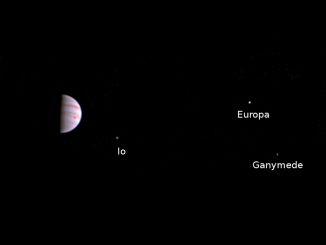
Europa


See the crescent Moon get close to Jupiter on Saturday, 9 July
If the excitement of the Juno spacecraft’s arrival at Jupiter has prompted you to seek out the solar system’s largest planet, then the 5-day-old cresent Moon acts as a convenient celestial guide during the evening of Saturday, 9 July when it makes a close pass of the gas giant. Here’s our guide to where and when to see this beautiful celestial pairing.
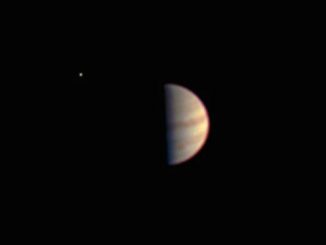
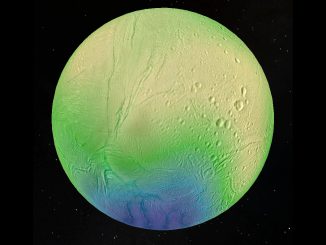
Saturn’s moon Enceladus and its paper-thin crust
Researchers have used data collected by the Cassini spacecraft to build a computer simulation of Saturn’s icy ocean moon Enceladus that includes the thickness of the ice crust. At its south poles, huge geysers of water jet into space. These come from the ocean depths and suggest that the ice there must be relatively thin for this to happen.
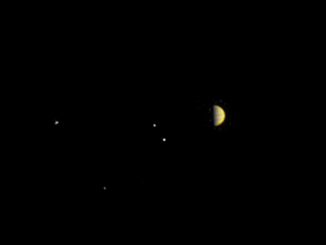
Jupiter and its satellites seen by ‘people’s camera’ on Juno probe
The visible camera on NASA’s Juno spacecraft is capturing a time-lapse movie of Jupiter and its four largest moons as the orbiter dives toward the giant planet for a 4 July rendezvous, and officials have released a first taste of the views armchair scientists and space enthusiasts can anticipate over the coming weeks and months.
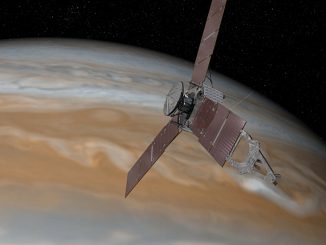
NASA’s Juno spacecraft closing in on Jupiter for 4 July orbit insertion
On 4 July, NASA will fly a solar-powered spacecraft the size of a basketball court within 2,900 miles of the cloud tops of our solar system’s largest planet, Jupiter. Over the past two weeks, several milestones occurred that were key to a successful 35-minute burn of its rocket motor, which will place the robotic explorer into a polar orbit around the gas giant.
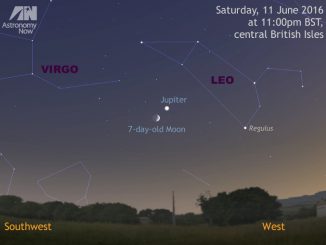
See the Moon and Jupiter get close on 11 June
As dusk fades to dark on Saturday, 11 June, observers in the British Isles should look low in the western sky to see the 7-day-old waxing crescent Moon and Jupiter less than 3 degrees apart, within the same binocular field of view. Get your observations in now as the solar system’s largest planet is poised to leave the celestial stage during the summer.

Make the most of your Jupiter observations during May
Now two months past opposition, the solar system’s largest planet, Jupiter, is highest in the UK sky before sunset and is already descending in the southwest by the time the sky is dark enough to observe it. However, there is still phenomena of the Galilean moons to see and the planet’s Great Red Spot, so make the most of your Jovian observations while you can during May.
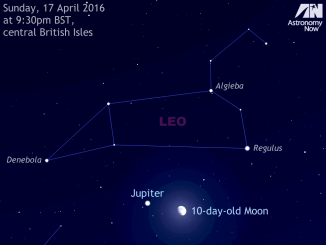
See the Moon and Jupiter get close on 17 April
As dusk fades to dark on Sunday, 17 April, observers in the British Isles should look up to the southern sky to see the 10-day-old waxing gibbous Moon and Jupiter just four degrees apart, within the same binocular field of view. Jupiter’s largest moon, Ganymede, and second Galilean moon, Europa, provide some events for telescope owners to view at higher magnifications.

Europa’s flexing icy crust might make more heat than scientists thought
As it orbits Jupiter, the icy surface of Europa heaves and falls with the changing pull of its parent planet’s gravity, creating enough heat to likely support a global ocean beneath the Jovian moon’s solid shell. Experiments by geoscientists suggest that this process, called tidal dissipation, could create far more heat in Europa’s ice than scientists had previously assumed.
